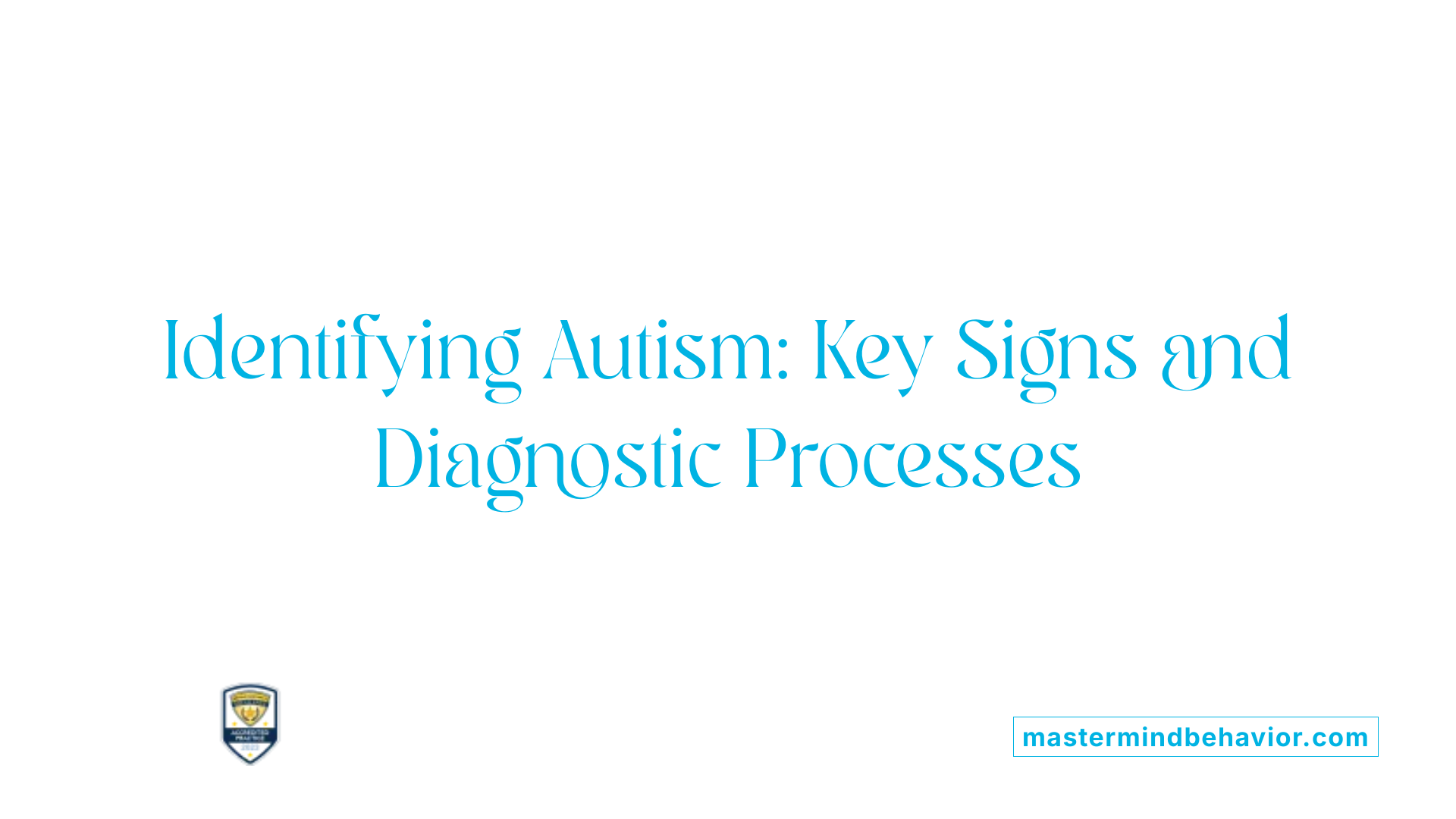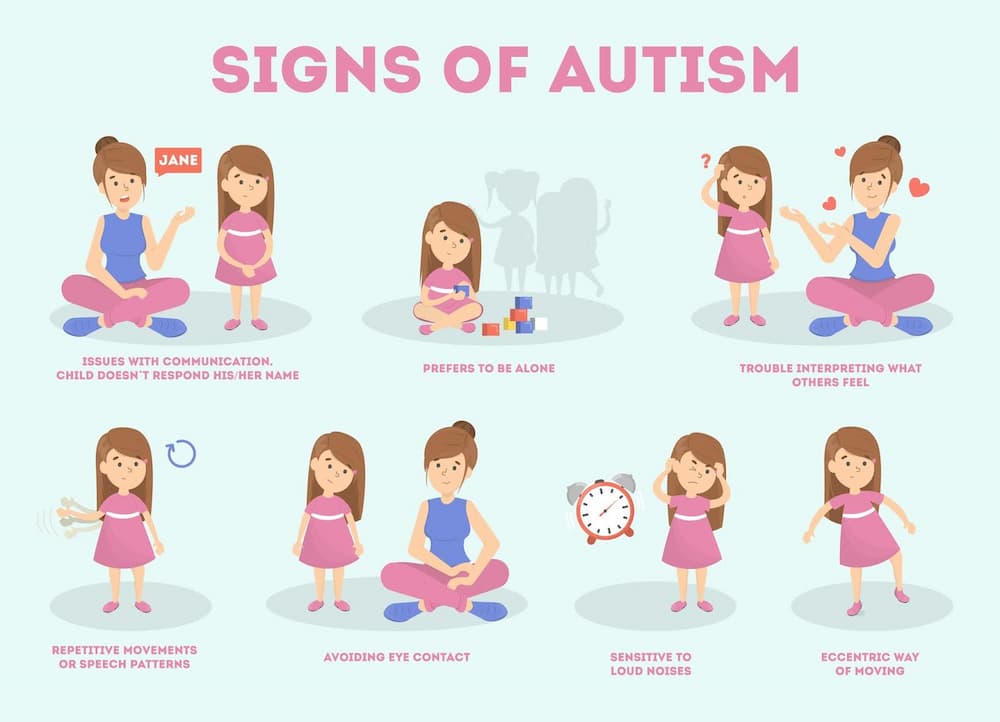Signs it’s time your family needs Autism Behavioral Therapy
Signs it’s time your family needs Autism Behavioral Therapy
Blog Article
Discovering Effective Strategies for Supporting People With Behavior Autism
Supporting people with behavioral autism requires a nuanced understanding of their special needs. You'll locate that customized interventions, grounded in evidence-based practices, can make a significant distinction. By teaming up with experts and households, you can create a customized strategy that promotes communication and growth. What particular strategies can you implement to assure these individuals thrive? Allow's check out the reliable techniques that can enhance their day-to-day experiences.
Understanding Behavior Autism: Key Characteristics and Difficulties
When you begin to understand behavioral autism, you'll observe numerous key qualities and obstacles that specify the experience for individuals. Social interactions may be testing; individuals may locate it hard to review social hints, leading to misconceptions in connections.
In addition, sensory level of sensitivities are common, causing discomfort in atmospheres with loud sounds or intense lights. These challenges can lead to stress and anxiety or frustration, impacting daily life. It's crucial to recognize that each person is one-of-a-kind, and their experiences might differ. Recognizing these features permits you to come close to assistance with empathy, promoting a positive connection that can enhance their well-being and urge development.
The Relevance of Personalized Interventions
When it involves sustaining individuals with behavioral autism, individualized treatments are necessary. By producing tailored treatment strategies that focus on individual toughness, you can substantially improve their development. Teaming up with assistance teams assures everybody is aligned in supplying the most effective treatment feasible.
Tailored Treatment Plans
Creating customized intervention strategies is necessary for efficiently sustaining people with behavioral autism, as each person's strengths, demands, and obstacles differ substantially. Begin by gathering comprehensive information concerning the person, including their choices, activates, and previous experiences. This versatility not only fosters interaction yet also advertises a sense of possession and empowerment for the person.
Individual Strengths Assessment
A private strengths assessment is essential for creating personalized treatments for people with behavior autism. By concentrating on everyone's one-of-a-kind capacities, you can develop methods that reverberate with their abilities and passions. This strategy not only enhances involvement however also improves self-confidence.
When you identify staminas, like extraordinary memory or creative talent, you can customize interventions that utilize these areas. This not just makes discovering extra reliable however additionally fosters a sense of accomplishment. Keep in mind, every person has unique abilities; recognizing them equips you to craft purposeful experiences.
Integrating these strengths into day-to-day routines and healing practices can lead to enhanced results. Inevitably, focusing on strengths warranties that treatments are not simply effective but also improving for the person.
Collaborative Support Groups
Acknowledging specific toughness establishes the stage for forming collaborative assistance teams that concentrate on tailored interventions. By bringing together experts, relative, and the people themselves, you create a supportive network that customizes strategies to meet particular needs. Each group member contributes special understandings, making certain a comprehensive method that attends to behavior difficulties efficiently.
You'll discover that partnership promotes open communication, enabling for continuous comments and adjustments. This adaptability is necessary, as it helps every person engaged keep straightened with the individual's objectives and choices. In addition, involving in this team-based method empowers people with autism, advertising their self-advocacy and confidence. Ultimately, personalized treatments established through joint support groups cause more meaningful progression and a much better quality of life.
Evidence-Based Communication Methods

When collaborating with people on the autism spectrum, using evidence-based communication strategies can considerably improve their capacity to link and share themselves. Using visual supports, like image timetables or communication boards, aids clarify assumptions and fosters freedom. Simplifying language and utilizing concrete terms enables much better understanding, lowering disappointment.
Including social stories can prepare people for different scenarios, educating them suitable feedbacks and behaviors. Motivating using assistive technology, such as speech-generating gadgets, encourages individuals to interact extra efficiently. In addition, using foreseeable environments and consistent routines can provide a complacency, making interaction more efficient.
Bear in mind to be person and give them time to refine your words. Taking part in active listening, where you show their sensations and thoughts, can reinforce your connection. By carrying out these methods, you'll create a much more helpful communication environment for individuals with autism.
Creating Supportive Environments
Creating encouraging settings for people with behavioral autism starts with executing structured regimens that give predictability and security. You'll additionally desire to create sensory-friendly areas that deal with individual demands, reducing frustrating stimulations. In addition, making use of favorable reinforcement techniques can urge wanted habits and foster a feeling of here accomplishment.
Structured Routine Implementation
Developing a structured regimen can significantly improve the environment for people with behavioral autism. By creating a regular routine, you offer predictability, which can reduce anxiousness and confusion. Beginning by damaging the day into convenient sections, incorporating tasks like meals, play, and silent time. Use aesthetic routines or timers to help them understand what comes next off. See to it to include opportunities for breaks, as these can assist them regroup and refocus. It is necessary to be flexible; while routines are helpful, adapting to modifications in mood or scenarios is essential. Encourage involvement in developing the regular, so they feel a sense of ownership and control. A well-structured setting fosters freedom and self-confidence, supporting their overall development.
Sensory-Friendly Spaces Layout

Favorable Reinforcement Methods
When you integrate positive reinforcement strategies into your strategy, you can significantly improve the learning and behavioral outcomes for people with autism. Start by determining what inspires the specific-- be it applaud, tokens, or special activities. You can also gradually enhance the complexity of jobs as individuals end up being more comfortable, reinforcing their progression.
Joint Strategies: Functioning With Families and Specialists

Involving family participants in decision-making encourages them and boosts their capacity to support their liked ones. Experts, consisting of specialists and teachers, can provide beneficial sources and training that even more aid family members.
You ought to likewise appreciate each event's perspective, recognizing that families understand their kid finest while experts bring specialized knowledge. By crafting individualized strategies with each other, you produce a tailored technique that deals with distinct demands. Autism Therapist. Eventually, this collaboration not just profits the specific with autism however also reinforces the support network surrounding them, more info making it much more efficient and cohesive
Incorporating Social Skills Educating
Building on the solid partnerships developed in between families and experts, integrating social skills training can greatly enhance the support provided to people with behavior autism. This training aids you show important communication skills, such as launching discussions, understanding non-verbal hints, and reacting properly in social circumstances.
By making use of organized activities, role-playing, and real-life scenarios, you develop chances for practice in a safe atmosphere. Motivate people to take part in team setups where they can engage with peers, fostering friendships and boosting their comfort in social contexts.
It is very important to tailor the training per person's unique strengths and obstacles, guaranteeing they feel capable and positive. Routinely integrating comments from both specialists and families can refine these approaches, making social abilities training more reliable. click here Eventually, you're encouraging people with the devices they need to browse social interactions efficiently and develop significant connections.
Keeping Track Of Progression and Adjusting Strategies
As you implement social abilities training, it's essential to check progression and readjust strategies as necessary. Keep track of behaviors, noting renovations and obstacles. Usage devices like checklists or charts to imagine growth and recognize patterns. Consistently assess your monitorings to assess what's working and what isn't.
Involve the person in representation, asking how they feel about their progression and what difficulties they face. This responses is important for customizing your method. If certain techniques aren't generating results, don't think twice to customize them.
Incorporate a range of strategies to maintain the training vibrant and interesting. Collaborate with other caretakers or professionals for fresh viewpoints and insights. Remember, adaptability is crucial; what works today might not function tomorrow. By remaining attentive and receptive, you create a setting that cultivates growth and advancement. Constantly commemorate success, no issue exactly how little, to urge ongoing initiative and enthusiasm.
Regularly Asked Concerns
What Are the Usual Misconceptions About Behavioral Autism?
You could believe behavioral autism just influences communication, however it encompasses a lot more. Several think all individuals with autism act the exact same, neglecting their one-of-a-kind traits and capabilities. It's necessary to understand each individual's distinctions.
Exactly How Can Innovation Help in Supporting Individuals With Behavior Autism?
Innovation can enhance interaction, supplying devices like applications for social abilities and habits monitoring. You can use virtual truth for immersive experiences, and wearable gadgets can keep an eye on emotional states, aiding you support individuals effectively.
What Duty Do Sensory Processing Issues Play in Behavioral Autism?
Sensory processing problems can greatly affect habits. You might observe that overwhelming sensory input brings about anxiousness or meltdowns. Recognizing these challenges helps you develop a much more helpful setting for people experiencing sensory overload.
Exist Particular Nutritional Referrals for Individuals With Behavioral Autism?
Yes, specific dietary recommendations can aid. You may think about a gluten-free or casein-free diet, which some discover useful (Autism Behavioral Therapy). Constantly consult a healthcare professional prior to making significant modifications to guarantee it's ideal for you or your liked ones
Exactly How Can Peers Be Educated to Assistance Individuals With Behavioral Autism?
To educate peers, you can arrange workshops, produce interesting materials, and motivate seminars. Engaging activities, like role-playing situations, help them comprehend obstacles encountered by people, promoting compassion and efficient assistance within the neighborhood.
Discovering Efficient Techniques for Supporting Individuals With Behavior Autism.
Creating tailored intervention plans is essential for efficiently supporting individuals with behavior autism, as each individual's demands, staminas, and difficulties vary significantly.A private toughness analysis is vital for developing individualized interventions for people with behavior autism.To support individuals with behavior autism, making sensory-friendly spaces is vital, as it can considerably boost their comfort and emphasis.Joint approaches are essential for supporting people with behavior autism, as they cultivate a strong collaboration between professionals and family members.
Report this page